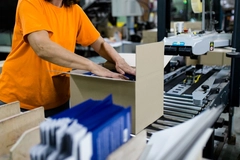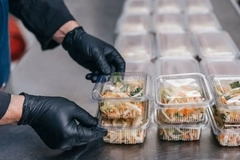Polystyrene Foam Cups and Plates Use Less Energy, Water Than Paper or Corn-Based Alternatives
24 Mar 2011

A new peer reviewed study finds that commonly used cups, plates and sandwich containers made of polystyrene foam use significantly less energy and water than comparable paper-based or corn-based (polylactic: PLA) alternatives, primarily due to polystyrene foam's much lower weight.
A new peer reviewed study finds that commonly used cups, plates and sandwich containers made of polystyrene foam use significantly less energy and water than comparable paper-based or corn-based (polylactic: PLA) alternatives, primarily due to polystyrene foam's much lower weight.
The polystyrene foam products create less, similar or more solid waste by volume than alternatives depending on the product and its weight, according to the study, and greenhouse gas emission comparisons vary widely, based on uncertainties over whether paper-based products degrade after disposal.
The life-cycle inventory and greenhouse gas emissions study compares average-weight polystyrene foam, paperboard and PLA cups used for hot (16 ounce) and cold (32 ounce) drinks, 9-inch dinner plates and "clamshell" sandwich containers. Researchers modeled energy consumption, water use, solid waste (by weight and volume) and greenhouse gas emissions for each product resulting from production, transportation and disposal.
The peer-reviewed paper updates a 2006 study and incorporates additional data, most notably on greenhouse gas emissions following disposal.
Some key findings:
- Energy use: Polystyrene foam products consume significantly less energy than the alternatives – half as much as wax-coated paperboard cups and one-third as much as PLA clamshells.
- Water use: Polystyrene foam products use significantly less water than the alternatives – up to four times less than PLA clamshells.
- Solid waste: Polystyrene foam products create significantly less solid waste by weight than the alternatives – up to five times less than paperboard and PLA products. Comparisons by volume vary widely:
- Polystyrene foam cups for hot drinks create less waste by volume than the alternatives – significantly less than paperboard cups with corrugated sleeves used for insulation.
- Polystyrene foam cups for cold drinks create similar waste by volume as plastic coated paperboard cups and significantly less than wax coated paperboard and PLA cups.
- Heavy duty polystyrene foam plates produce more solid waste by volume than the alternatives, while lighter duty polystyrene foam plates create similar waste by volume as the paperboard counterparts.
- Polystyrene foam clamshells create slightly more waste by volume than paperboard clamshells and half the waste by volume of PLA clamshells.
- Greenhouse gases: Polystyrene foam products generate slightly more greenhouse gas emissions than PLA products, expressed as net CO2 equivalents (see note below). If paperboard products do not degrade after disposal, they store carbon and generate fewer greenhouse gas emissions than polystyrene foam products; however, if paperboard products degrade to the maximum extent, they generate more greenhouse gas emissions than polystyrene foam products, so comparisons of greenhouse gas emissions vary widely depending on assumptions about the degradation of paperboard products.
The study's authors found that lower weight products with similar functionality – such as polystyrene foam products composed of more than 90% air – generally produce smaller environmental burdens.
Although PLA is corn-based, the study notes: "According to the [PLA producer] NatureWorks LLC website, PLA does not biodegrade in landfills."
Emissions of all greenhouse gases for each system are expressed on the basis of net CO2 equivalents, using each substance's net global warming potential relative to carbon dioxide (CO2). For example, since methane has a higher global warming potential than CO2, each pound of methane released makes a larger contribution to global warming impacts than a pound of CO2.
The study results are calculated based on the average weight of the various products.
The study's authors note "uncertainty" in the water use results due to lack of clarity over how water use data on different materials were derived.
The authors note that post-disposal "greenhouse gas results [are] more uncertain than other emissions data" based on uncertainties over whether paper-based products degrade after disposal.
They also highlight the lack of data on actual degradation of coated paperboard foodservice products and point out that "results for paperboard products vary considerably depending on assumptions about decomposition."
The study was prepared for the Plastics Foodservice Packaging Group of the American Chemistry Council.
Source: American Chemistry Council
All content and features on this website are copyrighted with all rights reserved. The full details can be found in our privacy statement
Subscribe to our newsletters
By continuing to browse our site you agree to our Privacy Statement











